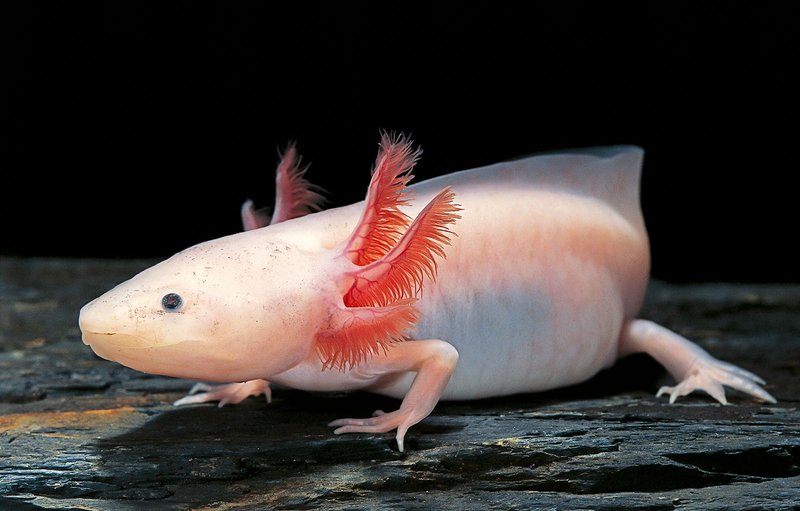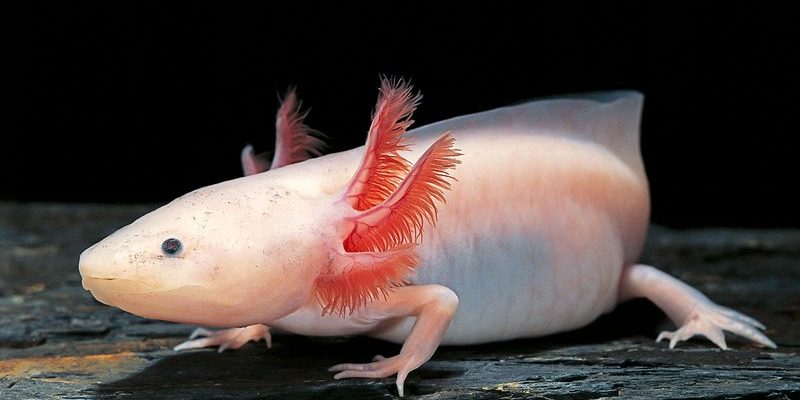
The axolotl is unique not just for its appearance but also for how it interacts with its habitat. These little critters are found in the canals and lakes of Xochimilco, near Mexico City. Unfortunately, due to habitat loss and pollution, they’re in danger of disappearing. But understanding their role in the ecosystem is crucial for conservation efforts. Let’s dive deeper into the world of axolotls and explore their significance in their natural surroundings.
What Makes the Axolotl Unique?
The axolotl is often a show-stopper because of its striking looks. With feathery gills and the ability to regenerate lost limbs, they capture the attention of both scientists and casual observers alike. But their uniqueness goes beyond just their charming appearance.
One of the wild things about axolotls is that they retain their juvenile features throughout their lives, a trait called neoteny. This means they keep traits like their external gills, making them look almost perpetual teenagers in the amphibian world. Honestly, it’s like having a buddy who never seems to age!
In their natural habitat, these incredible creatures are often found hiding among rocks and plants. The lush environments help them stay safe from predators while also providing a perfect hunting ground. They feed on worms, insects, and even small fish, helping control these populations in their ecosystem.
The Axolotl’s Role as a Predator
You might be wondering why it’s essential to understand what axolotls eat and how they hunt. Well, these amphibians play a significant role in their ecosystem by maintaining the balance of their waterways. As predators, they help keep populations of smaller creatures in check, which is crucial for a healthy habitat.
Axolotls have a unique hunting technique. They use a method called “suction feeding,” where they rapidly inhale water along with their prey. This method is not just quick; it’s also efficient, allowing them to catch insects and small fish without much effort. You can think of it like using a vacuum to clean up crumbs—super effective!
By controlling populations of smaller animals, axolotls contribute to a balanced ecosystem. Without them, we could see a rise in those populations, leading to overgrazed plants and algae blooms that can harm the water quality. So, axolotls aren’t just cute; they help keep their environment in harmony!
Environmental Challenges Facing Axolotls
Sadly, the axolotl is not just facing everyday challenges; it’s under serious threat. The primary culprits? Habitat loss and pollution. As urban areas expand, the natural habitats where axolotls thrive are disappearing. This loss can disrupt the delicate balance of their ecosystem.
Pollution also plays a massive role. Contaminants can significantly affect water quality, making it hard for axolotls to survive. Imagine trying to live in a home that’s constantly getting dirtier—eventually, it becomes unlivable. Axolotls face this harsh reality through pollutants that impact their health and breeding.
Moreover, the introduction of non-native species into their habitat can lead to competition for food and space. These newcomers can also introduce diseases, putting additional pressure on the already vulnerable axolotl population.
The Importance of Conservation Efforts
To protect the axolotl, conservation efforts are crucial. Many organizations are working tirelessly to preserve the delicate ecosystems where these creatures live. They focus on restoring natural habitats, fighting pollution, and raising awareness about the axolotl’s plight.
Habitat restoration is a hands-on approach. This might involve initiatives to clean canals, remove harmful pollutants, and replant native vegetation. Think of it as giving the environment a nice spring cleaning!
Education is equally vital. By informing locals and visitors about the axolotl’s significance, we can foster respect and understanding for these unique creatures. Conservation is not solely about saving one species; it’s about protecting an entire ecosystem.
Research and the Axolotl
The axolotl is a star in the world of scientific research. Scientists are fascinated by their ability to regenerate limbs and even parts of their spinal cord. This unique trait could lead to breakthroughs in regenerative medicine for humans. Imagine if we could heal injuries or lost limbs as easily as an axolotl!
Research on axolotls also sheds light on broader ecological practices. By studying their populations and behaviors, scientists can better understand the health of their entire ecosystem. They act as indicators of environmental health, meaning their well-being reflects the condition of their habitat.
In laboratories, researchers can observe the effects of different environmental factors on axolotl survival and reproduction. This knowledge can inform conservation strategies and help guide efforts to maintain healthy ecosystems.
The role of the axolotl in its natural habitat is multifaceted and essential. From being a predator that helps balance its ecosystem to serving as a subject of scientific research, the axolotl is a small but mighty creature. However, we need to act fast to protect their environment and prevent further decline.
Conservation efforts play a vital role in ensuring these unique amphibians continue to thrive. By learning more about axolotls and their habitats, we can take meaningful steps to preserve them for future generations. So, whether you’re reading this out of curiosity or because you’re eager to help, remember that every effort counts. Together, we can help keep these little champions swimming in their wild world.

